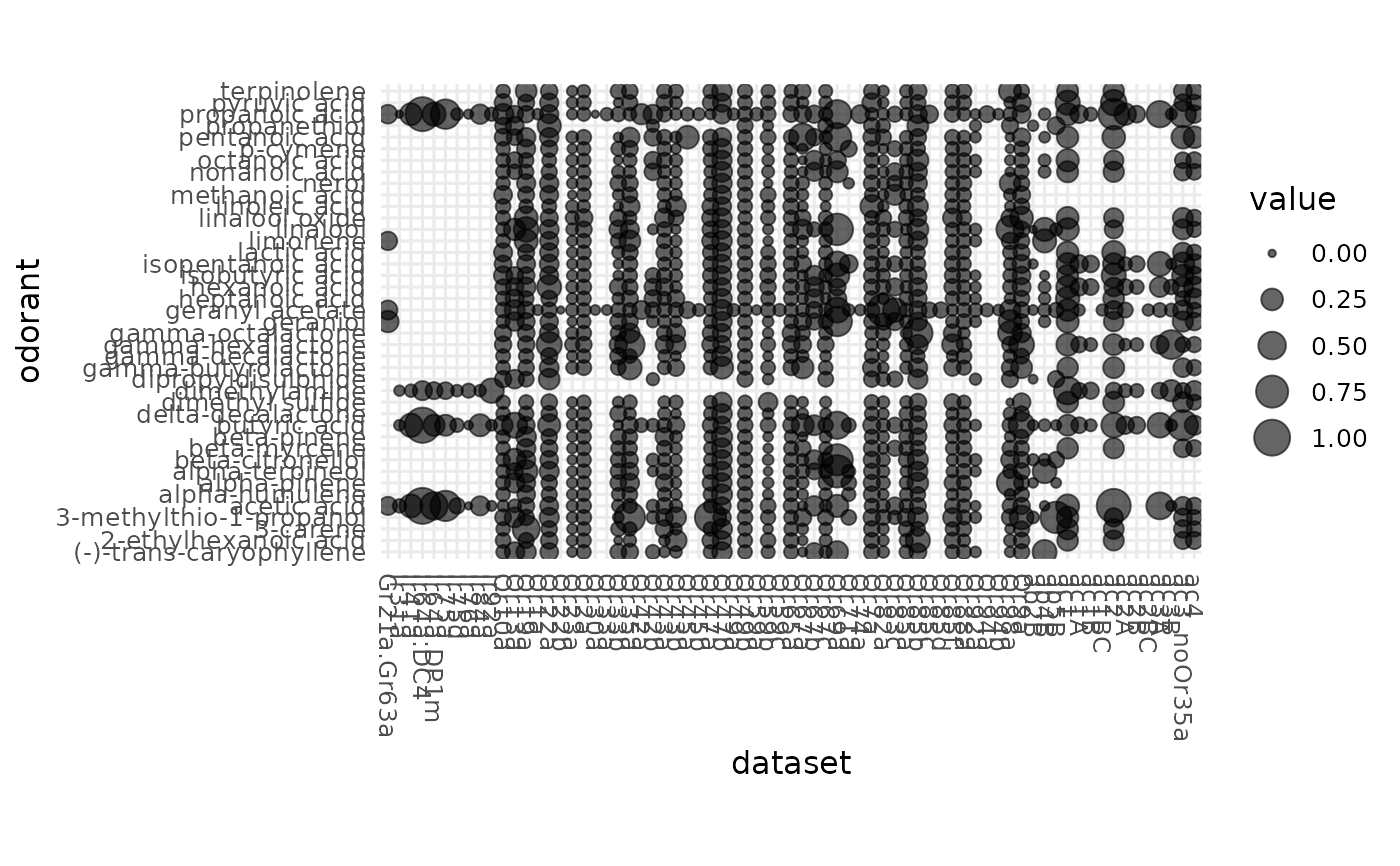plot DoOR responses as a point matrix
Usage
dplot_response_matrix(data, odor_data = door_default_values("odor"),
tag = door_default_values("tag"), colors = door_default_values("colors"),
flip = FALSE, fix = TRUE, bw = FALSE, point = FALSE, limits,
base_size = 12)Arguments
- data
a subset of e.g. door_response_matrix
- odor_data
data frame, contains the odorant information.
- tag
the chemical identfier to plot (one of colnames(odor))
- colors
the colors to use if negative values are supplied (range of 5 colors, 2 for negative values, 1 for 0 and 3 for positive values)
- flip
logical, if TRUE the x and y axes will be flipped
- fix
logical, whether to fix the ratio of the tiles when plotting as a heatmap
- bw
logical, whether to plot b&w or colored
- point
logical, if
TRUEa point matrix instead of a heatmap will be returned (the default if you supply only positive values)- limits
the limits of the scale, will be calculated if not set
- base_size
numeric, the base font size for the ggplot2 plot
Author
Daniel Münch <daniel.muench@uni-konstanz.de>
Examples
# load data
library(DoOR.data)
data(door_response_matrix)
# reset the spontaneous firing rate to 0
tmp <- reset_sfr(door_response_matrix, "SFR")
# plot heatmap / coloured tiles
dplot_response_matrix(tmp[10:50,], tag = "Name",
limits = range(tmp, na.rm = TRUE))
 # plot dotplot
dplot_response_matrix(door_response_matrix[10:50,], tag = "Name",
limits = range(door_response_matrix, na.rm = TRUE))
#> Only positive values, returning b&w point plot.
# plot dotplot
dplot_response_matrix(door_response_matrix[10:50,], tag = "Name",
limits = range(door_response_matrix, na.rm = TRUE))
#> Only positive values, returning b&w point plot.

